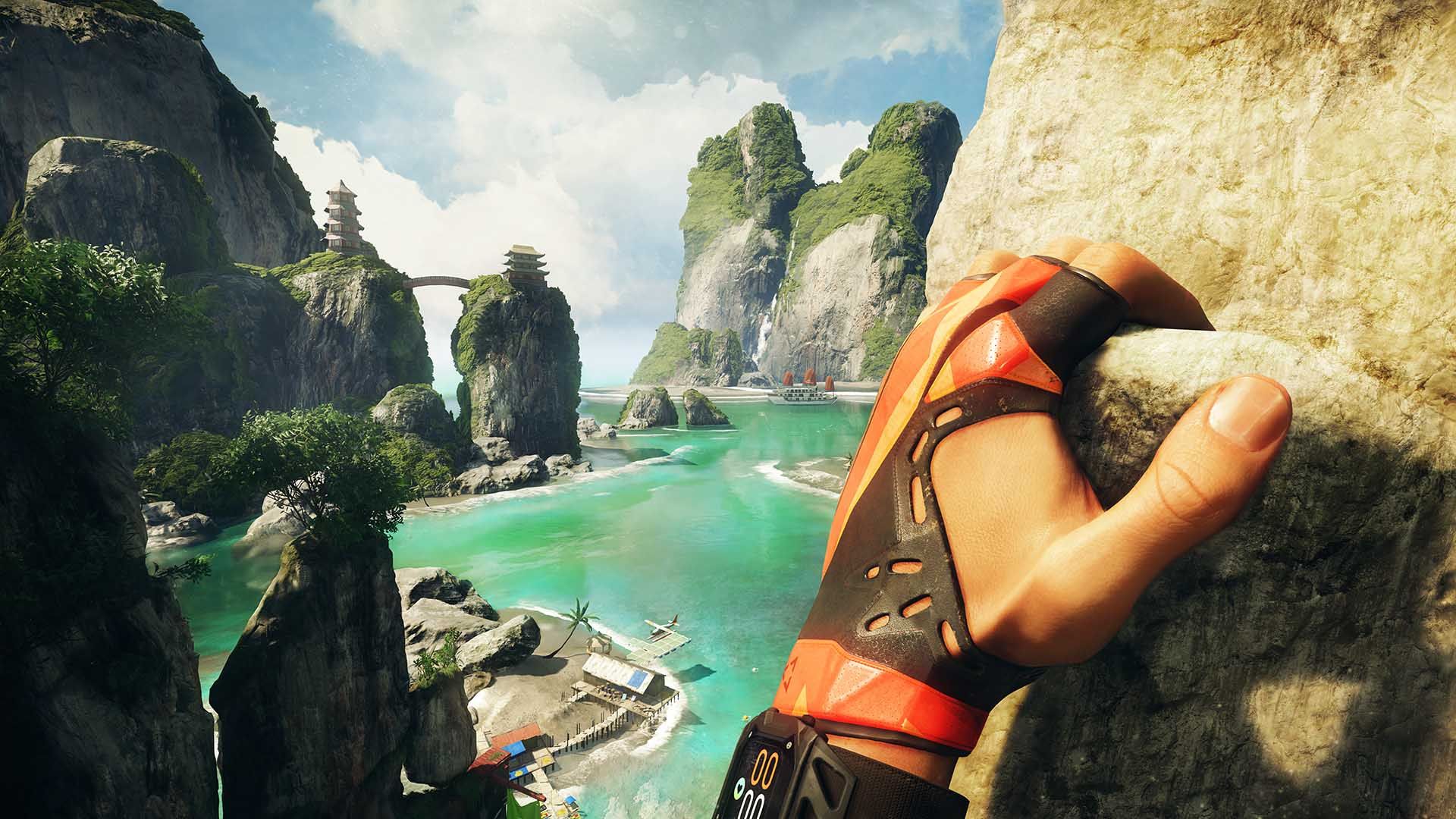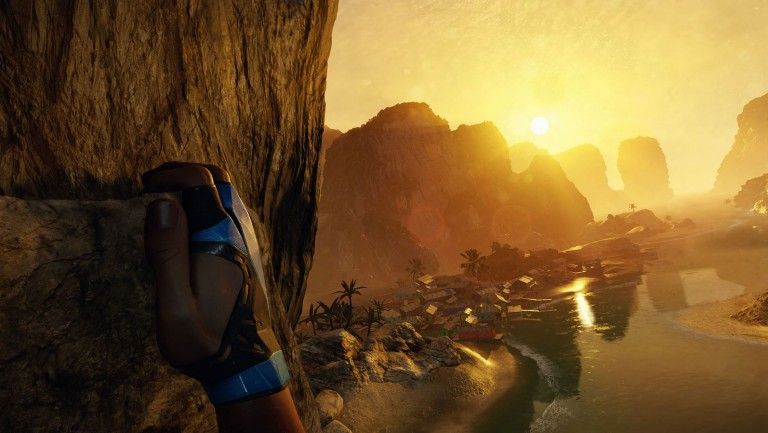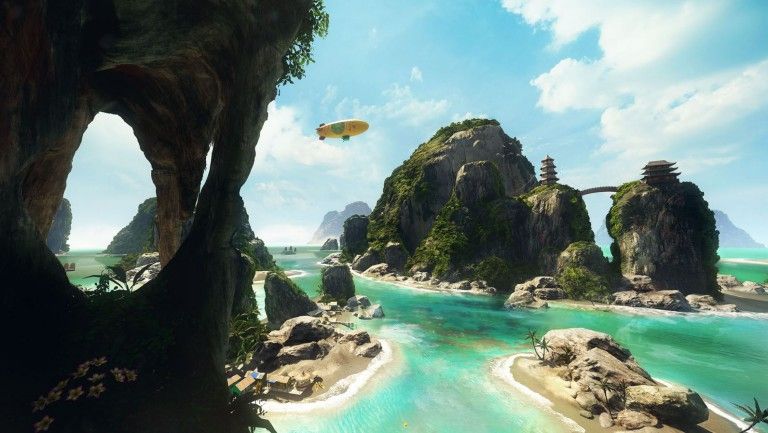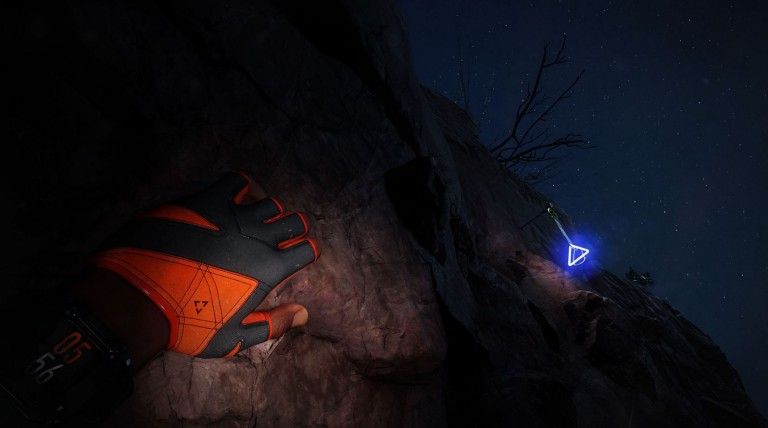Virtual reality is finally here and now excited gamers are putting Oculus Rift or HTC Vive headsets on for the first time. Prior to the official launch of the Rift, a few games were hyped up as must-plays for the device. These included EVE Valkyrie, Lucky’s Tale and The Climb by Crytek. As its name implies, the title all about mountain climbing. Given that this is an activity most of us never try out -- and one that could potentially be quite dangerous -- it makes perfect sense as an experience to recreate in virtual reality. Of course, the fact that the game’s developed by Crytek provided another boost of confidence for gamers eyeing The Climb despite its surprising $50 price point. The question is whether or not the game truly provides engaging, heart-pounding gameplay, or if the whole thing is more of a gimmick.
The Climb is focused entirely around climbing. There are three main environments to go through which include a bay, canyon, and alps setting. Each of these settings features gorgeous vistas in the backdrop (with the screen door effect still lurking) as players are tasked with climbing. Gameplay itself comes down to moving the climber’s left and right hands to grasp handholds and make their way across and up the side of a mountain. Interestingly enough, this is currently a Rift exclusive game even though the Oculus Touch hand controllers have yet to launch (and as of this writing, do not even have a release window specified). In many ways, it seems the title would have worked better if it launched alongside Touch controllers, or for HTC Vive since that headset ships with two wand controllers.
How do you actually move your digital hands when you’ve got no controllers to track your real world hands? It works much like non-virtual reality games out there. You simply pick up the Xbox One controller which comes with every Oculus Rift and control things that way. The left trigger maps to the left hand grip and right trigger works with the right hand grip. Notice that this is specifically the control used to grasp onto highlighted handholds. The controller’s analog sticks, however, are not used to move hands around. Instead, players control the location of their climber’s hands by looking about within the Rift. The result is that playing The Climb requires a lot of head/neck movement, and on occasion, stepping forward, back, or even stretching upward or squatting down. Although the game is playable while seated, the need for movement tends to make standing seem the ideal option for playing through. And yes, it does lead to neck strain and shoulder soreness.
Climbing is not as simple an experience as it should be. For one, the concept of controlling hand placement by looking does not make a ton of sense. Secondly, just turning your head in a specific direction does not guarantee the hands will be in the proper location to actually grasp a handhold. For example, sometimes they simply float out in space an inch or two too far from it. In order to successfully grab on, there’s often a need to also lean forward while facing toward your goal point. The hands usually respond well enough but there are definitely times in which they simply veer off course. The hardest task is often grabbing onto non-mountain terrain such as wooden planks or wires. Any grab points requiring precision reveal just how imprecise this whole control scheme is.
This confusion of control becomes more of a strain thanks to The Climb’s decision to make climbing more game-like than it needed to be. You see, each hand has a stamina level. If both hands are grasping something at the same time then stamina does not drain. However, most of the time you’re swapping between hands to move forward, and that’s when one of the two hands begins to lose stamina. Drain it all out and the hand simply lets go. Players must chalk their hands up to regain stamina, but that again requires one hand off a grip. The only ways to stop stamina drain are to only pull the Xbox One triggers halfway (or own the more expensive Elite control which has this function built in) or play in Tourist Mode. The only trouble with that mode is you don’t gain points to unlock more stages.
It also appears that The Climb in particular requires a surprising amount of space to play. This, despite the fact that only the HTC Vive requires minimum play spaces for their games. I say this because my gameplay session began about three feet from the Rift sensor, which is the suggested distance. Despite this, gameplay began with the mountain wall appearing merely inches from my face. It required two steps backward before there was enough space to actually see the wall, climber’s hands, and enough space to look around for further handholds. Sometimes stretching to grasp specific handholds even pushed the playspace in a foot to the left and right. Simply standing or sitting in place does not provide enough range of movement to complete each stage.
Crytek might not yet be professional virtual reality developers, but they do know how to make a good looking game. The vistas give an amazing sense of presence and, at times, it can even prove a bit overwhelming. Those afraid of heights should skip on The Climb for this very reason. There’s not much going around in the background, but occasionally birds or even other thrill-seekers may cause a bit of a ruckus. It’s imperative to keep the Rift snugly fit on the player’s head because all the movements required might at any point jostle it into a new, incorrect position. Audio is minimalist, with grunts from the climber as their grip slackens or they make a tough jump. It’s a shame that all the polish in the world is unable to change the core gameplay conceits here.
Closing Comments:
Even if you can get into the controls, there’s simply not all that much here. There are only three main landscapes to explore (and one continuous training mountain). Each of these are inflated with easy, medium and hard versions, but none of this changes the core fact that this is basically three levels being sold for close to the price of a new full-priced video game. To be fair, most virtual reality games have launched at similar prices, but most simply do not feel worth the asking price. Here’s a game that physically hurts to play. You need to provide a seriously great experience to make it worth the strain and The Climb simply doesn’t manage to provide compelling gameplay for even the most die-hard virtual reality fans.




